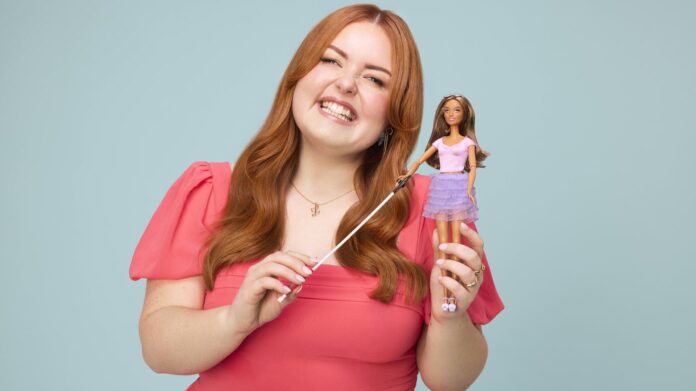“Hi Barbie!” – “Hi Ken!” Since the successful Barbie film last year, the toy doll has become very popular again. However, the original Barbie does not really correspond to an inclusive image in terms of appearance: long, thin legs, light skin, long blonde hair and blue eyes.
Hardly anyone conforms to this ideal of beauty. The US toy company Mattel has long been subject to harsh criticism in this regard. Almost ten years ago, the company first began to adjust the body shape of individual dolls – and thus move closer to a more inclusive future.
Mattel wants to show that you can play anything and be anything with Barbie. This message should now also include children with disabilities. Whether with or without disabilities, children should be able to make all their dreams come true. There are now very different dolls for this purpose. Barbie in a wheelchair with a barrier-free Barbie house, Barbie with prosthesis, Barbie with Down syndrome and currently new in the range: a blind Barbie.
An important step, says Verena Bentele, twelve-time Paralympicswinner and former Federal Commissioner for the Disabled and visually impaired herself. “Hardly any of us meet this a ideal of beauty,” she says: “That’s why I think it’s all the more important that a product like Barbie is diverse and shows what different people there are.”
There is great hope that disability will then be seen as more normal and taken for granted.
Verena Bentele to the inclusive Barbie dolls
But the line between this and a stereotypical depiction is thin. 42-year-old Bentele was also unsure about the depiction at first. The blind Barbie is equipped with a cane and sunglasses. “At first I thought it was kind of strange that she always wears sunglasses like Stevie Wonder or something,” says Bentele. She stresses that although many blind people wear sunglasses, not all of them do and especially not all of the time. But the Mattel company has thought far enough ahead. The sunglasses can be pushed into the doll’s hair, the cane can be put down and the elbows can be bent so that they can hook onto other people’s arms.
The inclusive Barbies are part of the Fashionista series, which attaches great importance to the fashionable appearance of the dolls. For Verena Bentele, these details are quite relevant, as they promote the normalization of blind people in the long term.
There are still many stereotypes against blind people, especially in the area of fashion. “For many people, it is a prejudice and a cliché in the way they think and act that people who cannot see do not care at all about clothes and colors. But that is not the case at all,” says Bentele.
She personally attaches great importance to what she wears and therefore always seeks support from a fashion consultant. “It’s not just sighted people who are well-dressed. Some of them have no taste,” she says. Verena Bentele also shows no understanding for the criticism and comments that the blind Barbie wears high heels.

© IMAGO/Noah Wedel
Everyone can wear heels
“Why shouldn’t blind people be able to wear high heels?” asks Bentele. This is all the more true since the sound of shoe heels can help blind people with their acoustic orientation.
The hope of these steps towards a more inclusive children’s room is to make people aware of all types of disability at a young age and to reduce fears of contact early on. “It is a great hope that disability will then be seen as more normal and taken for granted,” says Bentele. Prejudices could be reduced through this normalization. Why not present the world in the children’s room as varied and diverse as it is in reality?
It’s not just about depicting and portraying different types of disabilities, but also integrating them into the possible uses. “I would just like manufacturers to think about how toys can be used by different children,” says Bentele.
In September, Verena Bentele will attend a Mattel event on this very topic and will also take part in a panel discussion. The goal: inclusion in all children’s rooms.
